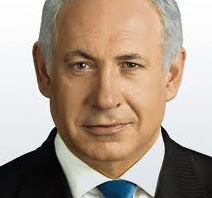
Ibrahim Bornat, 25, was shot last month while demonstrating against the annexation of land from his village, Bil'in, in the West Bank. Continuing land grabs by the state of Israel will annexe 58% of the agricultural lands from this farming village. Bil'in is remarkable in that it has staged weekly demonstrations against the theft of its land for a number of years.
After midday prayers each Friday villagers march from the mosque in an attempt to reach the separation wall. They are joined by international and Israeli sympathisers and observers, who document and record the often brutal response of the Israeli Occupation Force. Leading the march, from time to time, are wheelchair-bound young men, crippled in previous demonstrations by the Israeli army's use of live ammunition and rubber-coated steel bullets.
The usual scenario is that the demonstrators are confronted by heavily-armed soldiers well before they reach the barrier. Without warning, sound bombs and tear gas cannisters are lobbed amongst the chanting villagers as a prelude to volleys of rubber-coated steel bullets. These are not the so-called "rubber bullets" as described by the army and the popular press. They can be lethal: they fracture bones, they sever arteries, they blind, they maim, they kill.
These brutal responses usually succeed in dispersing the crowd, who retreat out of range. This is the signal for the shebab, the youth of the village, to throw stones or use slingshots against the soldiers and their armoured vehicles, usually from well out of range. Occasionally, a stone will bounce off an armoured car, to shouts of delight from the shebab. At best this is a token victory, a mere signal of defiance.
But the cost is enormous. Every week there are casualties, some minor, some requiring hospitalisation. Some of the wounds are just painful, some lead to the loss of limbs, of eyes, to major physical trauma. Nevertheless, in a continuing saga of remarkable courage and tenacity, the villagers come back, week after week, putting their bodies on the line in defence of their village.
What the Israeli army stands to gain from their habitual brutal response is more problematical. Why not let the villagers march to the barrier and make their speeches? Why not let them wave their flags and display their signs? Why put down a peaceful demonstration with such force?
On Friday June 13 Ibrahim Bornat and a few other young men had succeeded in approaching to within a few metres of the cyclone wire fence. The demonstration had all but fizzled out and most of the villagers had gone home. No internationals or Israeli activists were left at the scene. Before I left I saw Ibrahim throwing stones at a spy camera mounted on the fence, watched by a group of Israeli soldiers on the other side. When we were gone, with no outsiders there to observe their actions, the soldiers shot him, at close range, three times, using live ammunition. The dum dum bullets (which are banned under international humanitarian law) severed an artery and Ibrahim was rushed to hospital. If he succeeds in walking again, he will be back, one day, at the Friday demonstrations. For the full story, follow the link on this page to the electronic intifada.
Ibrahim's story is one amongst many others. With the most powerful army in the Middle East, Israel is powerless, it seems, to destroy or even dampen popular resistance to its continuing occupation and theft of Palestinian land. Bil'in should be an inspiration to all who love freedom and value justice.


No comments:
Post a Comment